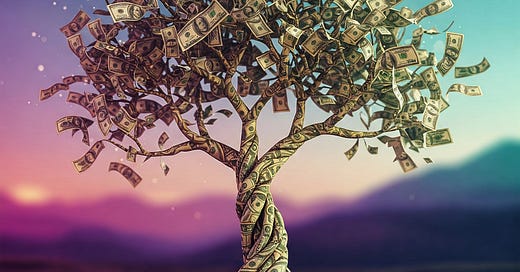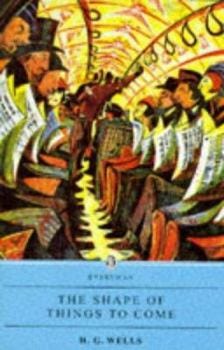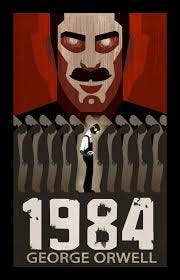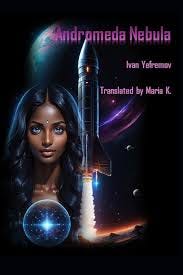Everybody is freaking out about the market, tariffs, and a looming recession. So, I thought it would be a good time to look into the magic glass of SF and see what it tells us about the future of your 401K. It turns out, not much. And this in itself is an interesting point.
Economics has been called “the dismal science” by Thomas Carlyle. But dismal or not, it IS a science. So, why do other sciences inspire SF and this one does not? Theory of relativity has launched a thousand spaceships through imaginary wormholes. Schrödinger’s kitten has bred innumerable cats rampaging through the multiverse. Genetics and molecular biology have populated millions of pages with mutated monsters. But economics? How can you write an SF novel based on a spreadsheet?
But if we broaden our focus a little, it turns out that SF is very interested in different economic systems, though it seldom makes this interest explicit. Every time a utopia presents a perfect society, there must be an economic system in the background that ensures the equitable distribution of resources. Every time a dystopia portrays some Hunger Games scenario, it implicitly acknowledges the economy of scarcity and exploitation (though, as we shall see, the economy of the Hunger Games is also utopian). And even when SF or fantasy depicts a pseudo-medieval society, it blatantly forgets to inquire about land ownership and villeinage. The silence about the economy in SF is significant precisely because, as Lacan taught us, the unspoken is more important than what is shouted out loud.
In my previous post about SF and Marxism, I argued that Marx is the most important influence on SF in the last two centuries. Marxism is the philosophy of the future. Hate it or love it, the genre that deals with the future cannot escape it. Thus, SF, whether Soviet, Anglo-American, post-Soviet or Chinese, finds itself in an implicit dialogue with Marx.
Marxism, which was both an economic theory and a political ideology, envisioned the transition from capitalism to communism. The latter was defined as the economic system based on the abolition of private property, money, and markets. Marx was not entirely clear how this transition was to be accomplished, but Lenin and other Marxist thinkers after him established that it would involve an intermediary stage of socialism, in the which the means of production were owned by the state, and the markets were ran by the centralized bureaucracy to ensure the equitable distribution of resources. Thus, the basic distinction that dominated the last century was between planned-centralized and market economies.
It was a common belief between the two world wars that centralized economy was more efficient than the markets. Regardless of whether they called themselves communists, socialists, or social democrats, the left tried to achieve “the end of private property, profit, and the market; a fully planned economy; and a wholly collectivized agriculture” (Malia 163). And the right was on the same page. Fascism and Nazism did not abolish private property, of course, but they subordinated the markets to the geopolitical and social ends of the regime in the same way the USSR did. Stalin had his Five-Year Plan, Hitler his Four-Year Plan.
Much of the SF of that period embraced the idea of a centralized and planned economy as the way of the future. H. G. Wells described the Modern State run by the bureaucracy of the educated elite, called the New Samurai in A Modern Utopia (1905). He extended this vision in The Shape of Things to Come (1933). Markets are gone from these utopias, together with democracy, which Wells despised.
A centralized and planned economy also underpins Oceania in George Orwell’s Nineteen Eighty-Four. But Orwell’s anti-utopia, written in opposition to the utopian dreams of Marxism which by that time had soured into the dismal reality of the USSR, shows that a planned economy is inefficient. It can deliver armaments but not consumer goods. Perhaps the most salient feature of Ingsoc is just how shabby, poor, and uncomfortable everyday life is under the gaze of Big Brother. Forget the torture chambers. The inability to buy a pair of decent shoes is a greater irritant to the majority of citizens than Two-Minute Hate. The most important character in the novel is neither Winston Smith nor O’Brien. It is Mrs. Parsons, a housewife, helplessly staring at her permanently clogged sink. The USSR was brought down not by missiles but by millions of Mrs. Parsons who got fed up with empty supermarket shelves and ideology instead of MacDonalds.
Centralized economy became less popular after World War 2 as the backlash to socialism and fascism in the West gathered strength. The publication of The Road to Serfdom by Friedrich Hayek in 1944 made a coherent case against top-to-bottom planning, arguing that centralized economy, such as the Five- and Four-Year Plans required "that the will of a small minority be imposed upon the people". Hayek not only made the case that socialism cannot deliver consumer goods (which was already obvious from the experience of the USSR) but also connected controlled economy with totalitarianism.
The SF of the Cold War reflects the economic divide between East and West. For the first time, Soviet SF, in the writing of Ivan Efremov and the Strugatsky Brothers, attempts to represent a communist utopia: a society with no private property, no money, and no exchange. Under communism you cannot own a flying car but a flying car will be provided upon request when you need it. You cannot own a house but you will move from place to place as your job requires, and an identical living space will be provided in every location. This presupposes the unlimited economy of abundance - the notion that is enjoying some renaissance with the recent book of that title by Ezra Klein - but also an extremely efficient distribution system controlled by computers or AIs. However, Soviet SF is quite clear that some people will always want more than their “fair” share, and such people will be exiled, re-educated, or even killed (though the latter is only indirectly alluded to, as opposed to Wells’ utopias which openly embrace class genocide).
It is instructive to compare Soviet SF with the society depicted in Star Trek. Gene Roddenberry conceived the series in the 1960s when the ideas of centralized economy were enjoying renewed popularity in the West. In the Star Trek universe, which has evolved with the economic and historical evolution of our own world, there seems to be unlimited abundance. Initially, the status of private property is unclear. People own personal belongings but can you own a spaceship? Eventually, in spinoff series like Picard, it seems you can at least own a winery. In Deep Space 9, the Ferengi are uber-capitalists (and an antisemitic caricature), indicating that market economies are part of the Federation. Corporations also reappear. So, while the original Star Trek presents a sort of communism lite without actually uttering the word, the endless remakes and sequels nudge the series closer to a capitalist economy, while remaining silent on issues such as markets, trade, and the inevitable rise in inequality. Remember Lacan on the unsayable and the unsaid!
Under neoliberalism, much of Western SF has become critical of capitalism, while offering precious little in the way of alternative economic systems. Evil corporations have become a staple of the genre. Kali Wallace’s Dead Space (2021), for example, portrays a corporate battle over deep-space stations that uses AIs as its weapons. Each station, owned by a particular corporation, is strictly regimented and controlled. The protagonist is forced into involuntary servitude by medical debt. But the options for rebellion are limited to her blackmailing her superiors with potential whistleblowing about the corporation’s illegal use of the AI she created. She sets the AI free because “it was never meant to be trapped inside weapons of war. churning out drones to help corporation feed its hunger for more territory, more resources, more power” (316). But a “free” AI is not much help to corporate slaves, caught in the economic exigencies of working for a living.
Even when a social revolution is depicted in SF, it almost never results in an alternative economic system. In Adrian Tchaikovsky’s Alien Clay (2024), a revolution against the faceless autocratic Order fizzles out into some vague communion with an alien ecosphere.
The Hunger Games (2008-2010) by Suzanne Collins are probably the best example of the way in which SF manages to avoid economics even when the subject is clearly economic in nature. When you strip away the veneer of YA gladiatorial contests, the relationship between the Capitol and the agricultural Districts is similar to that between the cities and the countryside in the USSR, in which food was requisitioned by force, leaving the rural population starving (that was what caused the Kholodomor in Ukraine). There is no free market (though there are some illegal black markets, without which no centralized economy can actually function). Each District is rigidly specialized. The Capitol exhorts produce from various Districts but prevents them from trading with each other, thus ensuring their dependence on central planning. The closest real-world approximation to the system in Panem is War Communism in the USSR between 1918-1921. While some critics tried to read The Hunger Games as a critique of colonialism, there does not seem to be any ethnic or racial difference between the Districts and the Capitol, only the class one, which was indeed the case in both the USSR and China under Mao.
But after the revolution in The Hunger Games, what is the new economic system? We are not told in any detail. Socially, the brutal dictatorship of the Capitol is supplanted by new Republic under an elected President and Hunger Games are abolished. Since the novels are obviously modeled on the American Revolution, we may expect that free trade will flourish, small farms will be consolidated into larger corporate units, and industrial capitalism will to ensure that the population is overfed rather than hungry. This fits with Katniss’ musings on the cyclical nature of history at the end of the trilogy. Even though The Hunger Games are supposedly located in the future, we get a warmed-up version of the glorious American past: MAGA on steroids.
In his monumental history of money, Niall Ferguson points out that “ if the financial system has a defect, it is that it reflects and magnifies what we human beings are like” (13). If you want too have a society without money, private property, risk and inequality, you have to remake human nature. In my next essay, I will take a look at how SF imagines this possibility.
Works Cited
Niall Ferguson, The Ascent of Money: A Financial History of the World (Penguin, 2008)
Friedrich Hayek, The Road to Serfdom (University of Chicago Press, 1994)
Martin Malia, Soviet Tragedy: A History of Socialism in Russia (Simon and Schuster, 1996)











Max Gladstone did some fun stuff with finance-as-magic and contract law in his Craft Sequence, but it's basically reframing global capitalism as the engine behind divinity and immortality.
Very interesting article. A small note: Holod in Ukrainian is "hunger". And Kholod is "cold" so the spelling "Kholodomor" makes it sound like people were dying of cold, rather than hunger. Sorry to quibble.